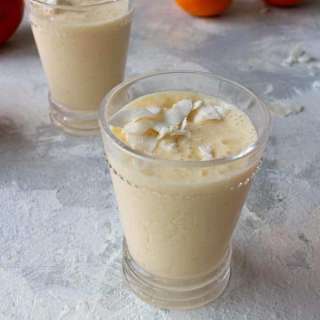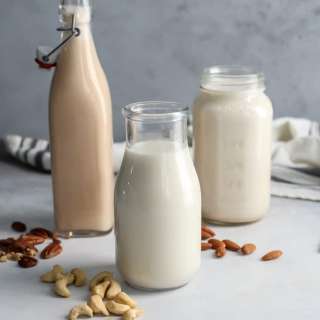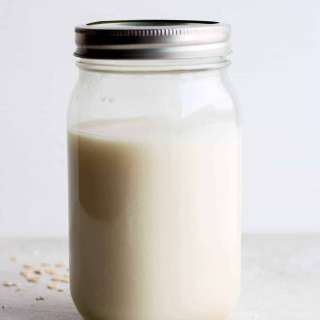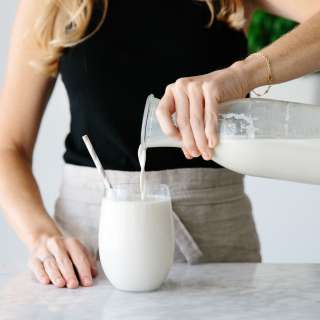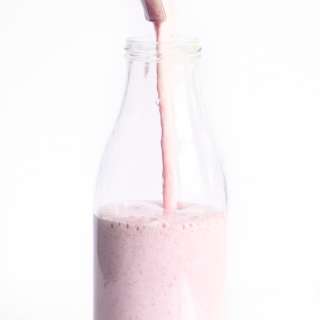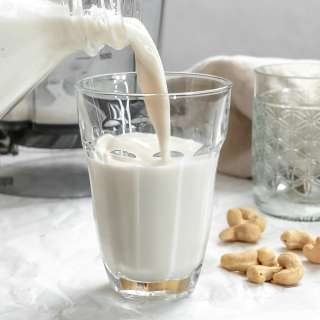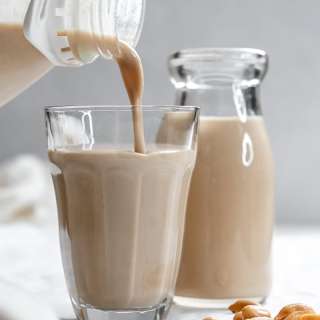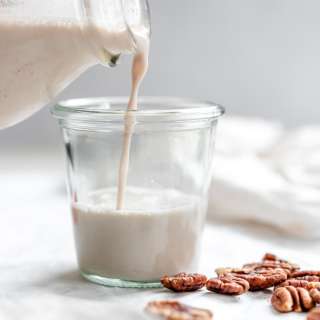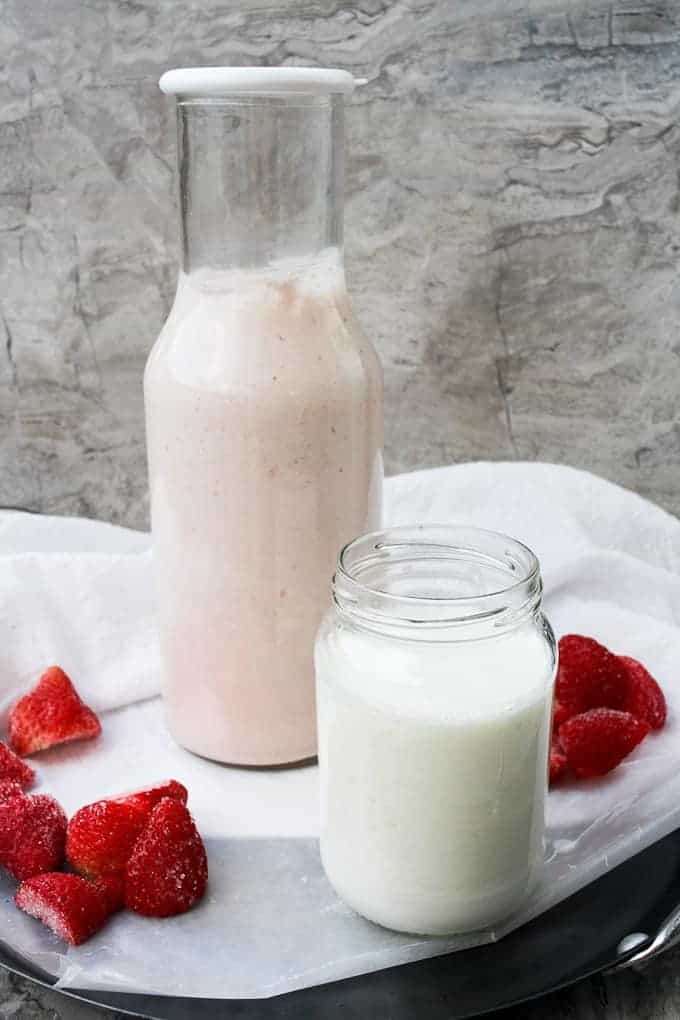
How to Make Milk Kefir
User Reviews
5.0
57 reviews
Excellent

How to Make Milk Kefir
Report
Are you tired of buying store-bought kefir? This step-by-step tutorial will walk you through How to Make Milk Kefir at home– all the way from the kefir grains to adding flavor!
Share:
Ingredients
Basic Milk Kefir Recipe:
- 1 cup milk, 2% or whole, avoid ultra-pasteurized (See Recipe Notes for non-dairy milk)
- 1 teaspoon kefir milk grains
- Optional: Fruit of choice for flavored kefir. Amount will vary based on how sweet you prefer your kefir. (Strawberries, cherries, + blueberries are highly recommended.)
Equipment Needed:
- 1 glass jar
- 1 paper towel, napkin, cheesecloth, or coffee filter
- 1 rubber band
- slotted spoon, mesh colander, or nut milk bag
Instructions
Basic Kefir Recipe:
- Add kefir grains to the glass jar and add the milk.
- Cover jar with the paper towel, and seal with a rubber band.
- Set milk out of direct sunlight and allow it to ferment at room temperature for about 24 hours.Room Temperatures: When it's approximately 70ºF, the kefir will take about 24 hours. In warmer rooms, it may be closer to 12 hours, and in cooler rooms, it may take as long as 48 hours. Rooms that are warmer than 90º are generally considered unsafe for kefir fermentation, because the milk will spoil faster than the kefir grains can work.When is the Kefir Ready?: The kefir is ready when the milk has thickened, but before the milk begins to separate into a watery bottom layer and a more solidified top layer. If your kefir separates during fermentation, it's still drinkable, just stir it up. Ferment the next batch for a shorter period of time.
- When the kefir has fermented, strain out the grains using a slotted spoon, a mesh colander, or a nut milk bag. (A slotted spoon is typically the easiest method, but if you're using kefir grains that have been dehydrated, the spoon's slots might be too big.)
- Set the kefir grains in a clean jar, and start the process over with more milk.
- Optionally, pour the kefir into a blender, and add fruit. Blend until smooth.
- Refrigerate kefir for up to 2 or 3 weeks. Kefir may separate in the fridge, especially after watery fruit has been added. Simply stir before drinking.
Notes
- This recipe can easily be multiplied. However, since milk kefir is made daily, starting with small batches is recommended.
- Carbonated Milk Kefir: To make lightly carbonated kefir, pour the finished kefir (without the grains) into a sealed container. Leave the container at room temperature for 12-24 hours. (Unlike with some carbonated beverages, you do not need to use a pressure-resistant bottle when carbonating, because milk kefir has a low sugar content and will not build up much pressure.)
- Non-Dairy Milk: Kefir grains will turn coconut milk into kefir, but the grains will likely stop growing and multiplying. This is a good use for extra kefir grains.
- What Should I Do with Extra Kefir Grains?: Kefir grains grow and multiply very quickly. Since the grains themselves are edible, you can add extra grains into the blender with the kefir and fruit and purée them into your flavored kefir. (Or, give them away to kefir-loving friends!)
- Putting Your Kefir on Hold: If you want to take a break from your kefir, you can store the grains in milk in a refrigerator for up to a month.
- Kefir Troubleshooting:
- While troubleshooting kefir issues, you'll likely need to change the milk and try fermenting the kefir grains again the next day. Each time, use the recommended 1 tsp of grain to 1 cup of milk. (You may be able to get away with using a little bit less milk, particularly when rehydrating dehydrated grains, but if that doesn't seem to be working, try using the full one cup each day.) And yes, that means you'll be throwing away some unusable, not fully fermented milk.
- My milk isn't fermenting. Have your kefir grains been in storage in the fridge? Were you rehydrating dehydrated grains? They might take a few days of fermenting (changing the milk each day) to ferment normally again.
- I bought dehydrated grains. Rehydrating grains can take 4-10 days of fermenting (changing the milk each day) to fully rehydrate and produce drinkable kefir.
- My kefir smells or looks "yeasty, sour, or off." Discard the milk, and place kefir in a fresh batch of milk. Repeat for 2-3 days. If it still smells off, discard the grains and start over with new grains.
Nutrition Information
Show Details
Calories
118kcal
(6%)
Carbohydrates
11g
(4%)
Protein
7g
(14%)
Fat
4g
(6%)
Saturated Fat
2g
(10%)
Cholesterol
18mg
(6%)
Sodium
110mg
(5%)
Potassium
330mg
(9%)
Sugar
11g
(22%)
Vitamin A
240IU
(5%)
Calcium
283mg
(28%)
Nutrition Facts
Serving: 1person
Amount Per Serving
Calories 118 kcal
% Daily Value*
| Calories | 118kcal | 6% |
| Carbohydrates | 11g | 4% |
| Protein | 7g | 14% |
| Fat | 4g | 6% |
| Saturated Fat | 2g | 10% |
| Cholesterol | 18mg | 6% |
| Sodium | 110mg | 5% |
| Potassium | 330mg | 7% |
| Sugar | 11g | 22% |
| Vitamin A | 240IU | 5% |
| Calcium | 283mg | 28% |
* Percent Daily Values are based on a 2,000 calorie diet.
Genuine Reviews
User Reviews
Overall Rating
5.0
57 reviews
Excellent
Other Recipes
